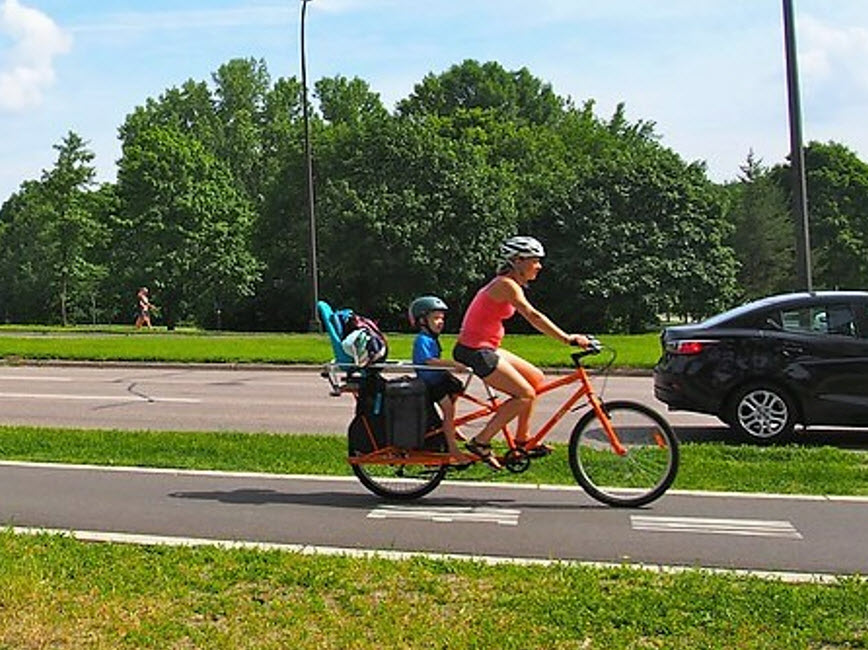
• Flip Book • eNews • eAdventures • eCities • eCargoIntl • eBikeTypes • eRoad • eMTB • eUrban • eCargo • eBikeTests • eAccessories •

• Flip Book • eNews • eAdventures • eCities • eCargoIntl • eBikeTypes • eRoad • eMTB • eUrban • eCargo • eBikeTests • eAccessories •
April 15, 2023 - Over the last 10 years, Minneapolis’ bikeway network has doubled in size to 255 miles and, on average, 4.1% of Minneapolis residents ride a bicycle to work, which is one of the highest bicycle commuting rates in the country.

Minneapolis has 16 miles of on-street protected bikeways and 23km of protected off-street bikeways. But the Twin Cities, also known as the City of Lakes, is just getting started.
Minneapolis’ overall Transportation Action Plan, which replaced the previous master bicycling plan, has set a goal to increase the trips taken via bicycle, or micromobility, by 10% by 2030.
Traffic counts also indicate that safety and bicycling go hand in hand, as cycling is growing six times faster on protected bike lanes and trails than on other bikeways.
The new Transportation Action Plan establishes an All Ages and Abilities (AAA) Network to be constructed over the next ten years, as only 49% of the existing network meets AAA criteria. Connectivity within the network is also a priority, to encourage more people of all ages and abilities to choose cycling.
The Minneapolis Bicycle Advisory Committee (BAC) supports all forms of biking and bicycle safety, and while the number of miles of bikeway has increased by 199% between 1993 and 2017 and the average number of bicycle commuters has grown by 212%, the bicycle crash rate has decreased by 75%.
Bicycle wayfinding signage currently exists at several locations around Minneapolis, including the Midtown Greenway and the newly installed mobility hub pilots. Providing a similar set of navigational wayfinding signs, designed for those using the All Ages and Abilities Network, will help provide direction to those on the network.
The city’s Bike Rack Cost Share program allows eligible businesses to be reimbursed up to 50% of the bicycle rack cost and 50% of the installation cost. Schools, libraries, parks and other eligible public facilities can request to receive racks at no cost.
The Bicycle Corral Cost Share Program is designed for businesses with high bicycle demand and limited space in the boulevard or sidewalk area. It’s a low-cost method to provide bicycle parking in spaces occupied by on-street parked cars. Businesses are reimbursed up to 50% of the bike corral cost.
Public bike lockers are also available to rent at various locations, including the University of Minnesota, Metro Transit stations and transit centres.
After 13 years, the city’s Nice Ride bike share program operated by Lyft was recently shut down, but the city has other interested licensees in the Shared Bike and Scooter Program and is optimistic that bikes will be available this season.
Minneapolis ranks as one of the best biking cities in the USA with the third-highest five-year average of bicycle commuting for large American cities (based on the 2017 census).